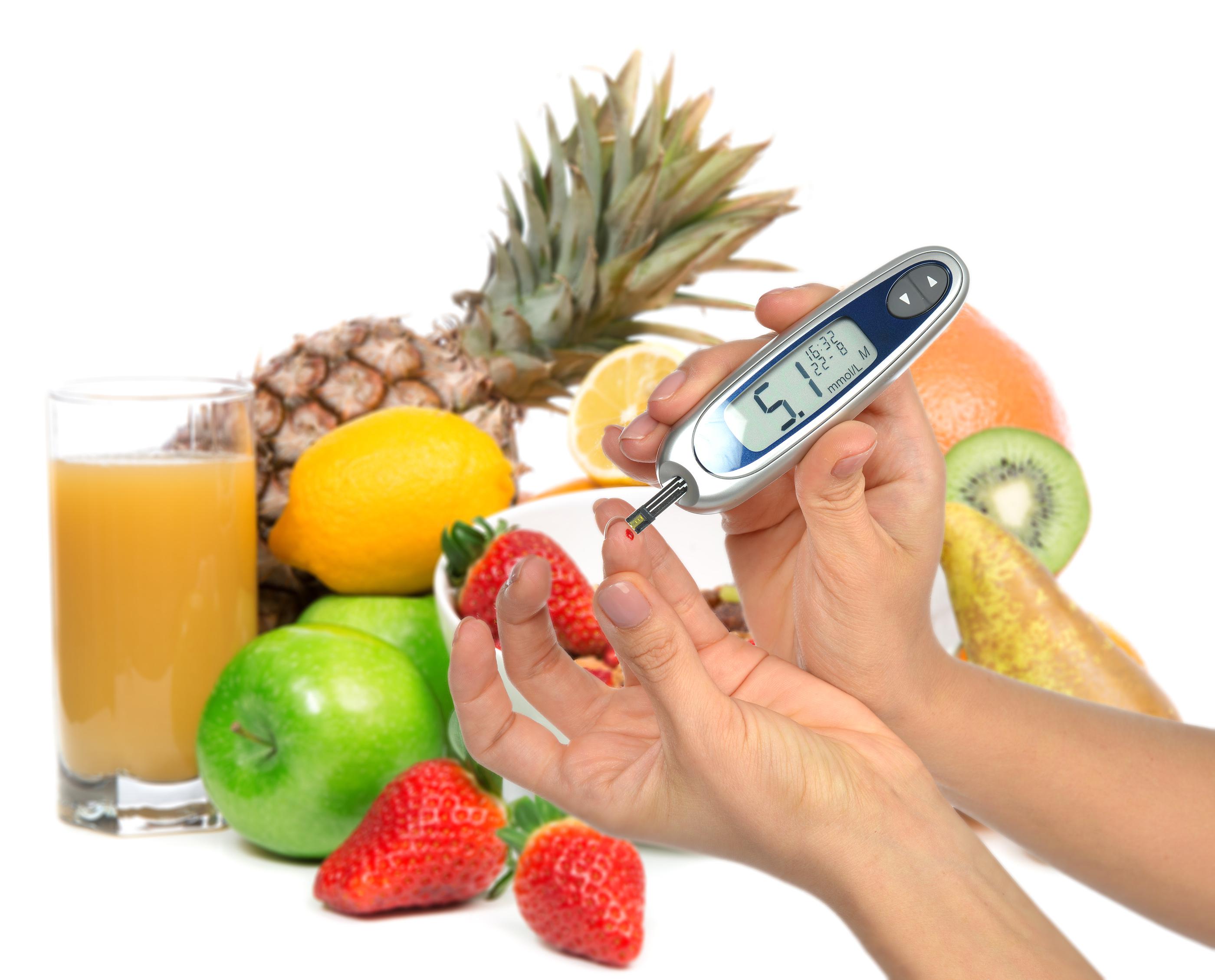
In the simplest terms, type 2 diabetes is a disease caused by too much sugar in your blood. The main cause is resistance of your muscle, liver and fat cells to the hormone insulin.
If your blood is tested for glucose and insulin levels and they are higher than normal, you are prediabetic. If the levels are a lot higher, you are a type 2 diabetic.
Type 1 diabetes comes from your own immune system attacking the beta cells in your pancreas. In infants and small children this happens quickly. But in a teenager or adult it can take years to lose all of your insulin-making beta cells.
When your blood is tested for glucose and insulin, glucose will be high but insulin will probably be lower. That is one way to tell adult onset type 1 from type 2 diabetes.
Since a blood test is the only way to be sure diabetes is present, it makes both type 1 and type 2 diabetes able to sneak up on you. This is why knowing your diabetes risk is so important.
More Reasons to Know Your Diabetes Risk
Almost 10% of people in the U.S. have diabetes, and another 7 million are probably unaware they have it. There are 79 million prediabetics here.
One in 400 of people under 20 have diabetes. Over 20 years old the number becomes one in ten. Over 65 that number jumps to one in four.
More than half of diabetic death certificates list heart disease as the first cause. Diabetes is the leading cause of new blindness and kidney disease. Three out of four diabetics have nervous system disorders, also called neuropathy.
Over half of amputations not caused by trauma are done on diabetics. These are the things we diabetics who are getting older have to face as possibilities.
It has been proven over and over that early and sustained blood sugar control lowers the risk of complications. But if you are one of the 79 million who are blissfully unaware of your high blood sugar, the statistics are going to catch up with you.
Know Your Risk
The number one risk factor is your family history. Twins are used to assess this risk for both type 1 and type 2 diabetes. If one twin has type 1 diabetes the second has a 50% chance of having it also. If one twin develops type 2, the other has a 75% chance of becoming type 2 diabetic.
Genetics also plays a role in diabetes. For type 2 the risk increases if your family tree includes any of these genes: African American, Alaskan native, Native American, Asian American, Pacific Islander, or Hispanic/Latino.
The white European races have a higher risk of type 1 diabetes. And people who live in colder climates are more at risk for getting type 1. Finlanders have four times as many type 1 diabetics as we do in the U.S. and 400 times more than Venezuela.
Some viruses can trigger the autoimmune response that leads to type 1 diabetes. Some of these viruses can directly destroy pancreatic beta cells. The known viruses include Epstein-Barre, mumps and cytomegalovirus, and there are probably more.
Other possible risk factors haven't been proven conclusively but here are a few. Low vitamin D, not enough omega-3 fatty acids, nitrates in drinking water, and newborn jaundice seem to increase the risks for type 1.
The sooner you get on insulin and regulate your blood sugar levels, the fewer complications you will suffer in your eyes, heart, kidneys and neurological system. Right now there is no other treatment for type 1 diabetes.
A Type 2 Diabetic Risk Test
Since 90% of diabetics have type 2, here's a good risk test to take. If you fit any of these statements you should get your blood sugar tested, and not just once but every year or so. That way type 2 diabetes won't sneak up on you.
- I have a parent, brother or sister with type 2 diabetes.
- My family background includes one of the ethnic groups mentioned above for type 2.
- I am a woman who tested positive for diabetes when I was pregnant (gestational diabetes).
- I am a woman with PCOS (polycystic ovarian syndrome).
- My doctor says I have high blood pressure. It can be 140/90 or above.
- My doctors say my cholesterol is too high and my triglycerides are above 250 mg/dL.
- I exercise less than three times a week for less than 30 minutes at a time. I'm pretty inactive.
- I have a history of heart problems or artery disease.
- I've had an abnormally high blood sugar test in the past.
- I have a dark velvety rash around my neck or in my armpits.
- I'm overweight and my BMI is higher than it should be.
If Your Blood Sugar Test Says You're Prediabetic
Finding yourself with a fasting blood sugar over 80 on a glucose test does not make you a type 2 diabetic. It does mean you need to do things to lower your diabetes risk.
If you lower your weight by changing some of the things you eat, that will lower your risk immediately. And if you exercise more than 30 minutes a day several times a week, you will drastically change your diabetes risk.
Prediabetics over 60 who changed their lifestyle in these two ways reduced their risk by 71%. Under 60 prediabetics lowered their risk by 58%. Those are just averages. You might do much better.
It all depends on whether you will change. Becoming physically active every day is guaranteed to transform your life. But it is important to make reasonable goals for yourself.
Losing as little as 5-7% of body weight has been shown to reverse prediabetes. The changes you make to your diet can be small but they have to be sustained.
Remember three things and you'll succeed in beating prediabetes.
- Drastic changes usually don't last.
- Fad diets are hard to stick with.
- It's better to do things you like for exercise.
If You Are a Type 2 Diabetic
The advice given for lowering your diabetes risk will work double for you now. Lowering your weight, getting in shape, changing what you eat and being more active - those things have been known to reverse type 2 diabetes.
Be faithful in taking the medications you've been given, and don't skip or quit. Avoiding complications is a top priority for you now, so keep all of your doctor's appointments and get the tests they ask for.
You might try joining a clinical trial or two. They are a great way to monitor and improve your diabetic condition. All of the medications and exams will be free, and you'll get topnotch care. You'll learn a lot too.
If you are interested in clinical trials for diabetes, here's the official website to visit: http://www.ClinicalTrials.gov.
You Can Lower Your Risk for Diabetes
No matter what genetics and family history you were given, you can lower the risks and avoid the terrible complications of diabetes. Advice on a healthy diet and ways to make exercise a habit will help you in the beginning.
Once you've decided to change, you might find that fighting diabetes has put you onto a new and unexpected path. That's not always a bad thing. I hope this helps you, and I wish you well.
Martha Zimmer invites you to visit her website and learn more
about type 2 diabetes, its complications and how you can deal with them,
as well as great tips for eating healthy that will make living with
diabetes less painful.
Go to http://www.a-diabetic-life.com and find out what you can do to avoid many of the pitfalls of this life-changing condition, like paying for cures that don't work and spending money for things you could have gotten free. Martha has made the mistakes and done the research so you don't have to.
By Martha J Zimmer
Go to http://www.a-diabetic-life.com and find out what you can do to avoid many of the pitfalls of this life-changing condition, like paying for cures that don't work and spending money for things you could have gotten free. Martha has made the mistakes and done the research so you don't have to.
By Martha J Zimmer









